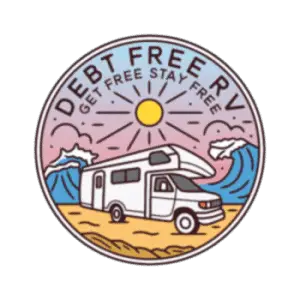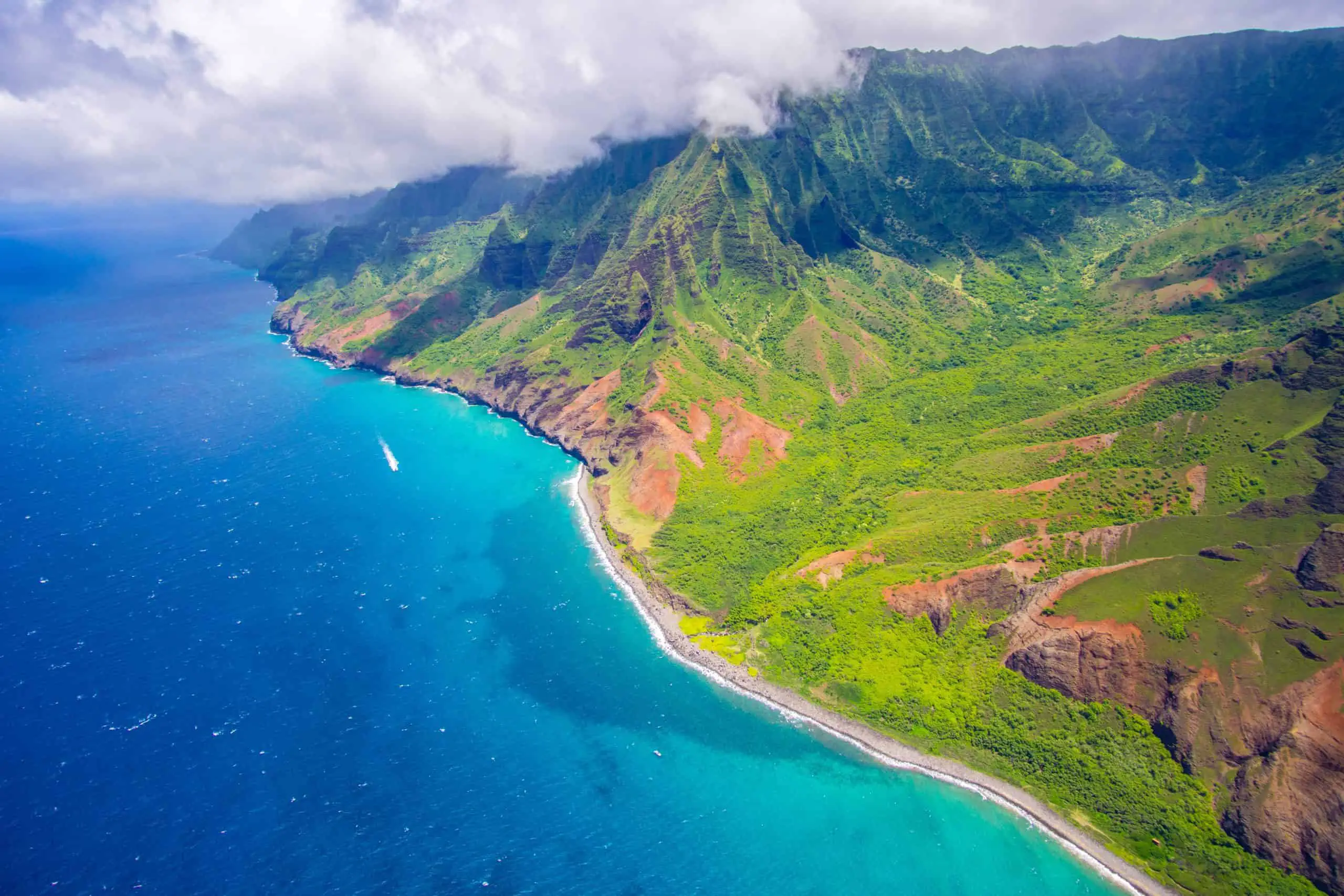With warm tropical breezes, rainbow-filled skies, and lush greenery, the Hawaiian islands are unparalleled in their beauty. Instead of staying cooped up in hotels, many visitors are looking into vans to tour the islands… but is it legal?
While camping in a van is technically legal on the Hawaiian islands, there are a slew of restrictions to follow. Van lifers are welcome to rent out van conversions, explore the islands, and reserve campgrounds for overnight stays, however, Hawaii does not allow for campers to sleep inside of their vans. Instead, campers are required to have a separate tent in which to spend the night. And be warned, while vans are permitted, RVs are not.
Why There Are No RVs in Hawaii: Environmental Reasons
On the Hawaiian islands, it’s not uncommon for visitors to see van conversions driving through the gorgeous terrain. What is conspicuously missing however, is any sign of RVs. There are many reasons for this dearth of RVs on the islands, and here, we’ll unpack why.
Humidity and Corrosion
Hawaii is a tropical environment, with salty ocean water completely surrounding each island. This makes for gorgeous views, but is terrible for the integrity of metal. The salty water makes for salt-filled air, as such, all islands will quickly corrode all that it touches. Add Hawaii’s constant high humidity, and you’ve got a good recipe for vehicle damage.
Although all vehicles are at the mercy of such an environment, RVs will take a major hit. Salt and humidity ramp up the rusting process, and will majorly affect RV parts, like the undercarriage, foot step, brake lines, battery terminals… everything.
Heavy Rainfall
Rainbows fill the skies of Hawaii daily, but it’s easy for visitors to forget that with rainbows come rain. And Hawaii offers much of both.
On average, Hawaii gets 17 inches of rain annually, the wettest months being between November and March.
New visitors to the islands are often shocked by Hawaii’s downpours, and their affect on the topography. Not only are landslides a very real threat, but flashfloods are known to carry people out to sea in a matter of minutes, moisture makes for unstable ground, and rockfalls are just a few of the results from Hawaiian rains.
Uncomfortably High Temperatures
Hawaii is warm year round, with temperatures staying above 68 degrees. However, during the hottest months, temperatures can exceed 90 degrees. Add the heat to the constant humidity, and you’ve got a recipe for serious discomfort.
In such an environment, staying in a small, enclosed space like an RV is not only uncomfortable, but potentially dangerous. Humidity begets moisture, and moisture is the enemy of RVs.
RV moisture leads to mold- a very common problem in even less humid environments- and mold is insidious. These fungi start overtaking everything: Anything made of fabric, inner and outer walls, cracks and crevices…. Even island locals have moisture-mold problems in their sticks and bricks homes; An RV is no match for Hawaii.
Why Camper Vans Can be Found, But Not RVs

Beyond safety and moisture problems, there are numerous other reasons why RVs cannot be found in Hawaii. Here’s a few:
No RV Campgrounds
RV-friendly campgrounds are non existent in Hawaii. RVs are barred from entering beach parking lots, state parks, or campgrounds, leaving RVers in the lurch.
If you’re thinking of shipping your RV to islands and think you’ll find an area to park, know that you won’t. You’ll be out thousands of dollars for shipping over the RV, but have no where to put it once it arrives.
Instead, camper vans are used for island exploration and camping, as they fit in regular parking spots, and are less intrusive than a standard RV. Unlike RVs, vans have access to any camping area in which regular cars are allowed.
No Dumping Stations
Dumping stations are essential for anyone camping or living out of their RV. Once the black (sewage) tank is filled, it must be dumped and cleaned. In Hawaii, however, there are no dumping stations available. Thus, it is not possible to take care of waste while in Hawaii.
In a camper van, however, there are a few options for taking care of your waste, like Thetford mini Porta Potti. Depending on the size, the waste tanks can hold from 2 to 5 gallons of waste that- when full- is dumped into a regular toilet and flushed down. (For more options, take a look at our own non-black tank toilet reviews here.)
Prohibited From Parks
Guests visiting Hawaii want to take advantage of their trip and sightsee the beauties of the island. From state parks, to mountain hikes, and star-filled night skies, campers can experience an irresistible paradise.
However, such exploration is not allowed while in an RV, as these vehicles are prohibited from even entering parks, lands, and campgrounds.
Again, camper vans are the only alternative to large, cumbersome RVs.
Treacherous Roads
Hawaii was formed by volcanic eruptions, indeed, new lands are still being formed daily. As a result, the region is mostly mountains and ocean cliffs. While this makes for a great view, driving through Hawaii can prove dangerous.
Other dangers include thick fog, falling rocks, and sharp turns. In fact, some areas are so dangerous, like the Kahekili Highway, drivers need a special permit to drive there.
Trying to navigate a 10,000-pound RV on such terrain is daring Lady Luck. And this is another reason why vans are preferred: Small vehicles are easier to control in dicey environments.
Campsite Restrictions
Hawaii is known for its vigilance in protecting its environment. So, although campers are allowed to experience the islands’ beauty, there are numerous, strict rules put in place.
The Island of Hawaii
Also called the Big Island, the Island of Hawaii has the highest number of campsites and parks. Here are the campsite restrictions:
- Max. stay = 5 to 7 consecutive nights.
- After that, you must wait 30 days to obtain another permit for an overnight stay in the same park.
- Camping permits can be reserved up to one year in advance.
- Spending the night in the parking lot in your camper can is illegal (often, tents are required for sleeping, outside of the van)
- Stay within the marked trails when hiking dangerous clliff edges and avoid accessing closed areas, which is regarded as trespassing and may get you a ticket or jail time.
- Expectant mothers, children, and people with health complication are not allowed near active volcano areas.
- No dogs or pets are permitted within the campsites, to protect endangered species.
Island of Maui
- Max. stay = 3 to 5 consecutive nights. You can get another permit to stay in the same park after a 30 day wait.
- Renting a campsite for commercial use is prohibited without a special permit.
- It is illegal to spend the night in the parking lot, even if you are in your camper van (tents are typically the required sleeping quarters)
- Dogs, pets, and firearms are prohibited in most campsites.
- Open fires are prohibited in some campsites. Thus, you can only start a fire in a designated area like a fire pit or grill.

Island of O’ahu
- Max stay = 5 nights at state parks
- Camping permits can be reserved not more than 30 days in advance
- Some campsites are only open on specific nights of the week. A good example is the Sand Island State Park, which is only open on Friday and Sunday nights.
- Reserving more than one campsite at a time is prohibited.
- Firearms and other weapons are prohibited except in designated hunting areas.
Island of Kaua’i
- Max. overnight stays = 5 consecutive nights
- Camping permits can only be purchased online or at the district offices.
- No open fires allowed, but you are allowed to light a contained fire for a stove.
- It is illegal to tamper with the environment, such as removing plants.
- Smoking and alcoholic beverages are prohibited.
- ATVs are not allowed, and driving on the beach is against the law.
- Because more campsites are located in the Canyon, access is restricted after a storm due to flash flooding.
- Wear bright-colored clothing when camping in designated hunting areas.
- Dogs and other pets are not allowed except hunting dogs in specified hunting areas.
Island of Maloka’i
- Most campsites are not equipped for sleeping in vehicles, including camper vans, so inquire before setting up.
- The only place campervans are allowed on the island is Wai’anapanapa State Park.
- Non-resident guests must pay entrance, parking, and camping fees.
- Reservations must be made at least seven days in advance.
- Beginning August 2021, all parking tickets must include an entry fee for each occupant in the vehicle.
- No pets or animals of any kind are allowed on the campsite.
- Visitors are not permitted to bring alcoholic beverages to the campsite.
- It is illegal to carry out any commercial activities while at the campsite.
How Much Does It Cost to Van Camp in Hawaii?
Hawaii is notoriously expensive. From food, water, supplies, and hotels, visitors need to have deep pockets and be ready to dole out much more than on the mainland. Here are some costs to keep in mind before renting out a camper van and living the Hawaiian dream:
The Camper Van
Due to high prices ubiquitous on the islands, renting out a camper van is as expensive as reserving a hotel room. If renting out something like a VW vanagon, the benefits of paying $100-$300 per night is the freedom to roam, to enter campgrounds, and sleep outside under Hawaii’s diamond-filled night skies. Hotels, although larger, just don’t have the same je nais se quoi.
If interested in scoping out VW camper vans complete with mini-kitchens, and pop up top, check out Hawaii Campers to see their available fleet.
Camping Permits
Before you can pitch camp, you’ll need the necessary permits for the local areas. To avoid a last-minute rush, it’s better to make reservations ahead of time. The cost of a camping permit varies, depending on the island. On average, camping permits cost about $25 per person per night for residents, and $35 for non-residents.
Supplies
Most campervans come with the basics: A bed, kitchen, outdoor shower, and fridge. You’ll need to buy all other necessary supplies.
Essentials like food, water, bedding, and safety gear, are your responsibility, and if you purchase these on the island, know you’ll be shelling out hundreds of dollars more.
Here are some examples of the high prices found in Hawaii:
1 gallon milk = $7.99
1 gallon filtered water = $13.79
Coral-safe sunscreen = $17.99
Greek Yogurt = $7.19
1 pound broccoli = $3.79
1 pound locally grown mangoes = $6.99
Be prepared for sticker shock.
Final Thoughts
In Hawaii, RVs are unwelcome vehicles: They’re big, cumbersome, hard to drive, have no place to park, and have no dump stations available.
Campervans, on the other hand, are much more acceptable, although Hawaii’s weather and legal restrictions make long-term van life difficult.
Remember, many campsites in Hawaii do not allow sleeping in campervans; Many require van guests to sleep in a separate tent over night, and only use the camper during the day!
Be mindful of each island’s specific campsite rules, and check with the site’s administration before setting out on your island adventure!

